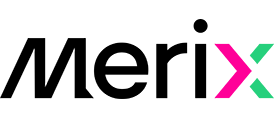
Nick Holloway
Are mortgage rates going to increase or decrease in 2019?
2/1/2019
By Nick Holloway
To a casual observer, it is fair to say that we can reflect on 2017 and 2018 as being an increasing rate environment, but now I want to take a moment to summarise where we stand up to now, and what the outlook might look like going forward given some of the latest available macro-economic figures and forecasts. The base-line to understand what is moving mortgage rates is by reviewing the Bank of Canada overnight rate, as well as government bond yields. I will look to examine some of the key features of these underlying rates and some of the reasons behind the changes we have observed.
Let’s start with the Bank of Canada, which started to increase, or tighten, its “target for the overnight rate”, also known as the key policy interest rate, from its low point of 0.5% in July 2017, with the final increase up to now during their October 2018 meeting to 1.75%. In turn, the Bank of Canada overnight rate is directly correlated to the prime lending rate which banks and lending institutions use in calculating interest payments on variable rate mortgages and lines of credit. It should be noted the Bank of Canada conducts 8 interest rate announcements each year, where the Banks committee decides whether to increase or decrease the overnight rate in line with its monetary policy objectives, and based on the last 13 meetings, we see 5 instances where the interest rate has been increased by a quarter percentage point.
The Bank of Canada had indicated as part of their “forward guidance”, they consider a “neutral nominal policy rate”, which it describes as a “medium to long term equilibrium concept”, to be somewhere between 2.5% and 3.5%. This range is largely driven by a desire by the bank that they have spare capacity to manoeuvre should a significant downturn occur, or in other words, they have the capacity to cut, or loosen, interest rates if needed to stimulate the economy. The Bank remain cognizant that by increasing the overnight rate too quickly, there is a possibility this may act as a catalyst which causes the economy to contract, so they continue to iterate that any future increases will need to be “gradual” and are very much “data dependant”.
The Bank of Canada has many aggregate data points at their disposal which they evaluate before deciding on changes to their monetary policy actions, some of which are outside the scope of this article. However, we can look at two of the main areas the Bank of Canada focuses on, being that of consumer price inflation (CPI) and real gross domestic product (GDP).
Firstly, one of the banks key objectives is to keep inflation at or around 2% per annum, because it is widely accepted that the economy benefits from a small amount of inflation, whilst also looking to avoid deflationary conditions. According to the Monetary Policy Report which the Bank released following their January 2019 meeting, it confirms in Q3 2018, we saw year-over-year inflation peak at 2.7%, but this has since receded to 2.0% for Q4 2018; the projections going forward for Q4 2019 and Q4 2020 remain at the 2% target.
Secondly, the Bank of Canada will consider the GDP number, expressed as a percentage, to understand if the economy is growing, as in a positive figure, or contracting, if the percentage falls below zero. For the Q4 2018 reported figures, the GDP year-over year increased by 2%, and is projected to dip slightly to 1.9% for Q4 2019 and increase for Q4 2020 to 2.1%. The report goes into more detail about some of the specific headwinds the Canadian economy is facing that may negatively affect inflation and growth going forward, noting financial market volatility, oil price declines and the slowing in growth in several key markets such as US and Europe, as well as emerging economies such as China. These headwinds might be temporary, but they are areas nevertheless the Bank is concerned about and will continue to monitor these risks on an ongoing basis.
To complete our picture, we want to look at changes in government bond yields, which is one of the key driving factors behind what rates are offered on fixed rate mortgages. To provide some context based on economic theory, a government bond, or more importantly, its yield, is considered the risk-free rate of return for a given dollar amount expressed as a percentage. In a sense, it provides a yardstick for investors to determine their required rate of return in relation to the specific risk profile of a given investment. To use an example, an investor can choose to accept the rate of return from a government issued bond knowing that their investment is virtually risk free, whilst a different investor may choose to invest in a mortgage backed bond, which by its nature is considered a relatively low risk investment, however the achievable rate of return from the mortgage bond should inherently be higher than the government bond in order to compensate the investor for assuming the increase in capital risk.
What we can see by looking at recent changes in the bond yields, these have increased over 2017 and 2018 period which is somewhat in-line with the changes observed in the overnight rate, with the bond yield peaking around October 2018, and has come off this high towards the tail-end of 2018. Historically, bond yields provide one of many key indicators of future inflation expectations that are effectively being priced into a tradable market. So as bond yields move higher, there is an expectation of higher inflation, which is a function of the demand by investors for an increasing rate of return, in real terms, which allows them to offset the capital erosion brought about by higher inflation. The same holds true in reverse, meaning as expectations of future inflation are decreased, the bond yields will typically respond by moving lower.
So, what should we expect in 2019? That is indeed the $64 million-dollar question and it is important to recognize that some of these figures are based on projections, given it would be impossible to offer a definitive answer as to what the future holds with so many different moving parts that make up the economy. This does however help to illustrate some of the keys areas to keep an eye on in order to interpret, at least with an increased probability, what direction the economy may take going forward. As the proverb says, to be forewarned is to be forearmed.




























